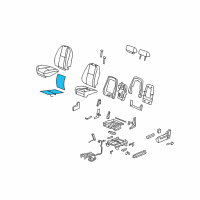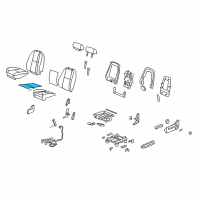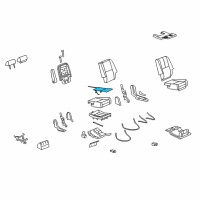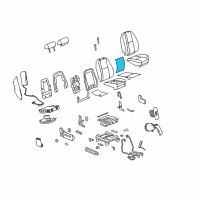< Back ×
My Vehicle Change Vehicle
2009 Chevrolet Suburban 1500
< Back to View All
Power & Heated Seat
- Department
- Prices
OEM (Genuine) 2009 Chevrolet Suburban 1500 Seat Back Heater
PartNumber: 20792749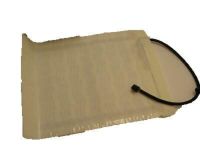 Product Specifications
Product Specifications- Notes: Bucket Seat, Passenger Seat, W/Power Lumbar, Seat Back, W/O Ht & Cooled; Bucket Seat, Driver Seat, W/Power Lumbar, Seat Back, W/O Ht & Cooled; Escalade Esv; Front Seat; Seat Back;Yukon Xl, Suburban; Front Seat; Seat Back
- Item Dimensions: 11.8 x 4.9 x 5.0 inches
- Item Weight: 0.60 Pounds
- Fitment Type: Direct Replacement
- Replaces: 25911156, 15232560
- Part Description: 2009 Chevrolet Suburban 1500 Seat Back Heater
Vehicle Fitment- 2009 Chevrolet Suburban 1500 | LS, LT, LTZ, Z71 | 8 Cyl 5.3 L FLEX, 8 Cyl 5.3 L GAS, 8 Cyl 6.0 L GAS
$68.11 MSRP:$102.74You Save: $34.63 (34%)OEM (Genuine) 2009 Chevrolet Suburban 1500 Heater Asm-Driver Seat Cushion
PartNumber: 20792748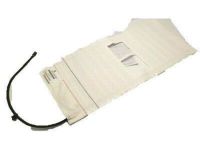 Product Specifications
Product Specifications- Notes: Bucket Seat, Passenger Seat, W/Power Lumbar, Seat Bottom, W/O Ht & Cooled; Bucket Seat, Driver Seat, W/Power Lumbar, Seat Bottom; Escalade Esv; Front Seat; Seat Cushion;Yukon Xl, Suburban; Front Seat; Seat Cushion
- Other Names: Element, Heater Element, Seat Cushion Heater
- Item Dimensions: 12.8 x 12.5 x 3.7 inches
- Item Weight: 1.00 Pounds
- Fitment Type: Direct Replacement
- Replaces: 15232559
- Part Description: 2009 Chevrolet Suburban 1500 Heater Asm-Driver Seat Cushion
Vehicle Fitment- 2009 Chevrolet Suburban 1500 | LS, LT, LTZ, Z71 | 8 Cyl 5.3 L FLEX, 8 Cyl 5.3 L GAS, 8 Cyl 6.0 L GAS
$73.07 MSRP:$110.24You Save: $37.17 (34%)OEM (Genuine) 2009 Chevrolet Suburban 1500 Seat Cushion Heater
PartNumber: 20792750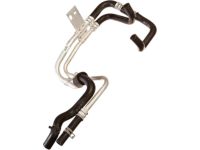 Product Specifications
Product Specifications- Notes: Escalade Esv; Rear Seat; Left;Yukon Xl, Suburban; Rear Seat; Left; 2nd Row Seat, Split Bench-60% Side; 2nd Row Seat, Bucket-Left Side
- Location: Driver Side
- Other Names: Element, Heater Element, Seat Cushion Heater
- Item Dimensions: 14.6 x 9.6 x 3.3 inches
- Item Weight: 0.70 Pounds
- Fitment Type: Direct Replacement
- Replaces: 15291596
- Part Description: 2009 Chevrolet Suburban 1500 Seat Cushion Heater
Vehicle Fitment- 2009 Chevrolet Suburban 1500 | LS, LT, LTZ, Z71 | 8 Cyl 5.3 L FLEX, 8 Cyl 5.3 L GAS, 8 Cyl 6.0 L GAS
OEM (Genuine) 2009 Chevrolet Suburban 1500 Heater Asm-Rear Seat Cushion
PartNumber: 15824761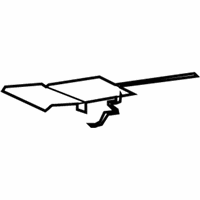 Product Specifications
Product Specifications- Notes: Escalade Esv; Rear Seat; Right;Yukon Xl, Suburban; Rear Seat; Right; 2nd Row Seat, Split Bench-40% Side; 2nd Row Seat, Bucket-Right Side
- Location: Passenger Side
- Other Names: Element, Seat Cushion Heater
- Item Dimensions: 11.3 x 5.4 x 5.3 inches
- Item Weight: 3.20 Pounds
- Fitment Type: Direct Replacement
- Replaces: 20792751
- Part Description: 2009 Chevrolet Suburban 1500 Heater Asm-Rear Seat Cushion
Vehicle Fitment- 2009 Chevrolet Suburban 1500 | LS, LT, LTZ, Z71 | 8 Cyl 5.3 L FLEX, 8 Cyl 5.3 L GAS, 8 Cyl 6.0 L GAS
OEM (Genuine) 2009 Chevrolet Suburban 1500 Mat Asm-Front Seat Vent Fan
PartNumber: 22856920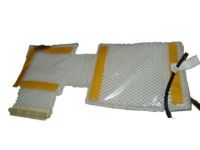 Product Specifications
Product Specifications- Notes: Bucket Seat, Passenger Seat, W/Power Lumbar, Seat Back, W/Ht & Cooled; Bucket Seat, Driver Seat, W/Power Lumbar, Seat Back, W/Ht & Cooled
- Other Names: Heater Element, Seat Back Heater
- Item Dimensions: 7.3 x 4.2 x 4.1 inches
- Item Weight: 0.60 Pounds
- Fitment Type: Direct Replacement
- Part Description: 2009 Chevrolet Suburban 1500 Mat Asm-Front Seat Vent Fan
Vehicle Fitment- 2009 Chevrolet Suburban 1500 | LS, LT, LTZ, Z71 | 8 Cyl 5.3 L FLEX, 8 Cyl 5.3 L GAS, 8 Cyl 6.0 L GAS
OEM (Genuine) 2009 Chevrolet Suburban 1500 HEATER
PartNumber: 22856923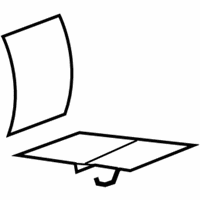 Product Specifications
Product Specifications- Notes: Bucket Seat, Passenger Seat, W/Power Lumbar, Seat Bottom, W/Ht & Cooled
- Other Names: Heater Element
- Part Description: 2009 Chevrolet Suburban 1500 HEATER
Vehicle Fitment- 2009 Chevrolet Suburban 1500 | LS, LT, LTZ, Z71 | 8 Cyl 5.3 L FLEX, 8 Cyl 5.3 L GAS, 8 Cyl 6.0 L GAS
FAQ for Seat Heater Pad Repair
Q: How to replace the Front Seat Back Blower Rivet?
A:
You should drill out the old rivets and install new rivets when replacing the blower assembly.
By Bob
GM Specialist
01/11/2022Q: How to replace the Front Seat Cushion Cover and Pad?
A:
You should disengage the j-channel retainers from the seat cushion frame and remove the seat cushion cover and pad from the seat cushion frame as an assembly.
By Bob
GM Specialist
01/11/2022Q: How to visually inspect the Symptoms-Seat Heating and Cooling?
A:
You should inspect for aftermarket devices that could affect the operation of the system and inspect the easily accessible or visible system components for obvious damage or conditions which could cause the symptom.
By Bob
GM Specialist
01/11/2022Q: What should we know about the Circuit/System?
A:
The driver and front passenger heated seats are controlled by separate heated seat switches located on the door panels. When a heated seat switch is pressed, the ground is momentarily applied through the switch contacts and the switch signal circuit to the door lock/window switch. In response to this signal, the door lock/window switch sends a serial message to the memory seat module (MSM) or heated seat module (HSM) indicating the heat seat request. The module then applied battery voltage to the seat cushion and seat back heater elements through a common voltage supply circuit. Each heater element is grounded by the module through separate low-side drive control circuits. The heater element control circuits are pulse width modulated (PWM) to the ground by the module to control the seat temperatures by regulating the current flow through the heater elements. The MSM/HSM relies on 4 independent inputs from temperature sensors (thermistors) located in the seat back and seat cushion of the driver and passenger seats. The temperature sensor resistance varies based on the temperature of the heating element causing the signal circuit voltage to change. Once the seat reaches the switch set temperature, the MSM/HSM will then cycle the control circuits of the heating elements ON and OFF to maintain the desired seat temperature based on the feedback voltage from the sensors. The MSM/HSM then monitors the current flow through the heating elements and the rate change of the temperature sensor to verify the correct heated seat operation.
By Bob
GM Specialist
01/11/2022Q: What are the preliminary procedures for Driver or Passenger Seat Cushion Ventilation Heating and Cooling Blower replacement?
A:
You should remove the front seat.
By Bob
GM Specialist
01/11/2022Q: What are the preliminary procedures for Rear Seat Cushion Heater replacement?
A:
You should remove the rear seat, remove the recliner handle, remove the outer finish cover, remove the inner finish cover and remove the cushion lower trim cover.
By Bob
GM Specialist
01/11/2022Q: How to replace the Front Seat Back Blower Assembly?
A:
You should disconnect the electrical connector.
By Bob
GM Specialist
01/11/2022Q: What are the preliminary procedures for Driver or Passenger Seat Back Cushion Heater replacement (without HP2)?
A:
You should remove the front seat.
By Bob
GM Specialist
01/11/2022Q: How to replace the front seat riser finish cover?
A:
You should pull rearward and disengage the cover from the seat riser.
By Bob
GM Specialist
01/11/2022Q: What should be cautioned about the component testing of Heated/Cooled Seats Inoperative (Z75)?
A:
If the resistance is measured with the seat still warm or cool, the resistance values will vary. At 20, the nominal resistance value is 1200 ohms ±5 percent. The delta resistance values between the seat cushion and seat back temperature sensors should not be greater than 2000 ohms. The test leads must be connected in the correct polarity. You should use the Positive Lead for the COOL control circuit and the Negative Lead for the HEAT control circuit. If the resistance is measured with the seat still warm or cool, the resistance values will vary even if the system was powered up for just a few seconds. The TED must be allowed to stabilize to room temperature before measurement.
By Bob
GM Specialist
01/11/2022See more FAQs (13)


